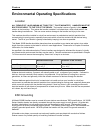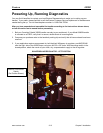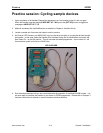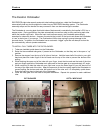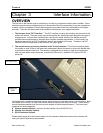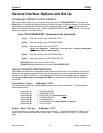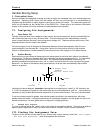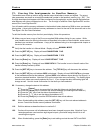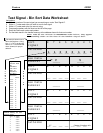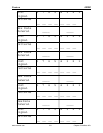
Exatron 3000B
www.exatron.com 3-2 Chapter 3 Interface Info
General Interface Options and Set Up
Accessing a Handler Control Interface:
When the handler powers up, you will be given the opportunity to,
PICK INTERFACE?
If you press the
[Enter]
button, the previously selected interface (or default interface, if RAM was cleared) will be selected.
Listed below are the standard interfaces currently supplied with the handler. N
OTE
: New interfaces are
added to the handler from time to time. Please contact E
XATRON
for updates as required. Our toll-free
telephone number is: 1-800-EXA-TRON.
From
“PICK INTERFACE?” displayed on the front panel:
[1] Key
Sets the handler to use "HANDLER PORT"
[2]
Key
Sets the handler to use “EXATRON SUPER”
[3] Key
Sets the handler to use “H P RS-232”
[
NOTE
:
FOR
“
LABEL
/
TEST
,” “
LABEL ONLY
,”
AND
“
TEST ONLY
”
OPTIONS
,
PLEASE REFER
TO THE MODEL
3000
B
-
L USER
’
S MANUAL
.]
[4]
Key
Sets the handler to use “PROGRAM RS-232”
[5]
Key
Sets the handler to use “EXATRON RS-232”
[Enter] Key
Sets your choice into the handler.
[Clear] Key
Rejects selection and returns to
PICK INTERFACE?
.
General Interface RAM Selections:
Listed below are addresses in the handler’s battery backed-up RAM which may be edited to fine tune the
handler for your specific programmer/tester and sorting requirements when using either the Handler Port
(parallel) or the RS-232 serial port. These addresses are not part of the standard power-up selections
and
may be modified only by “Changing The RAM,”
as described in the Handler Set-Up Chapter of
this manual.
Interface Type: Address 00D2
This address allows the user to set the default interface to be used by the handler. The following table
lists available settings:
data setting
21
= EXATRON SUPER
data setting
23
= PROGRAM RS-232
data setting
24
= LASER ONLY KIT
[
MODEL 5000 ONLY
.]
data setting
25
= EXATRON RS-232
data setting
26
= HANDLER PORT
data setting
27
= LOW GOING PULSE
[
USES SPECIAL PAL A89
-
2LP
.]
data setting
28
= H P RF RS-232
Start Test Delay: Address 0097
For DIP devices only, this delay adds "settling" time to the DUT. The delay allows the DUT more time to
come to rest in the test site before the contacts close. The delay counts down in HEX, in 1 millisecond
steps.



